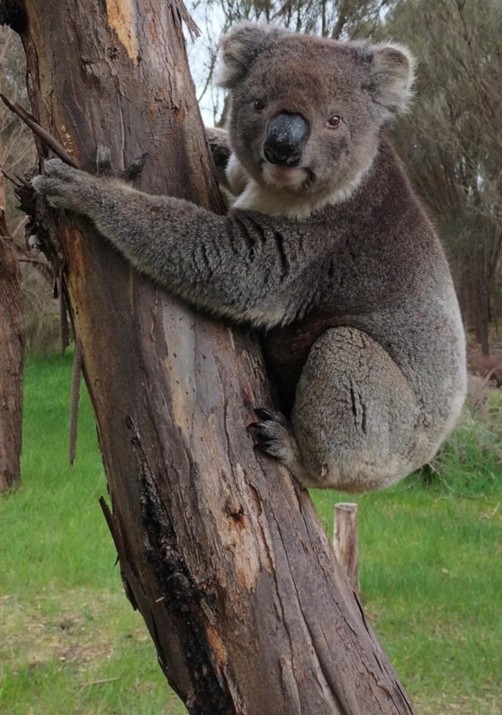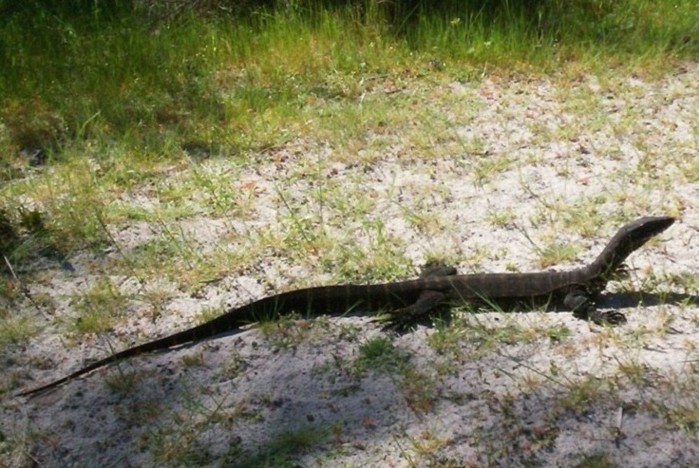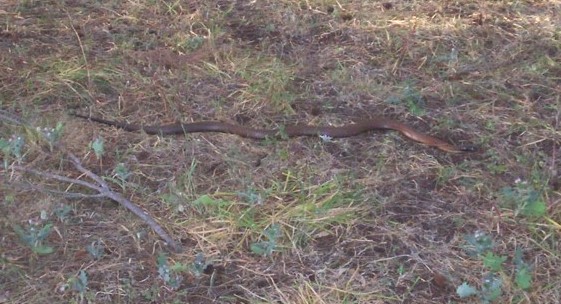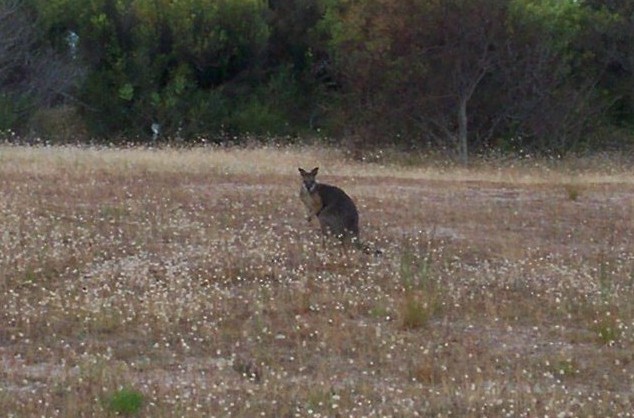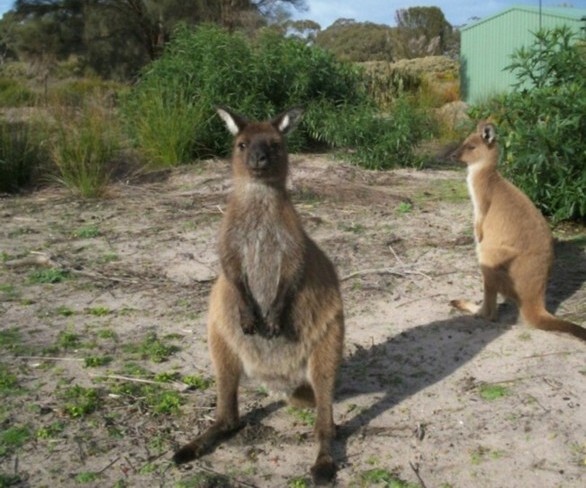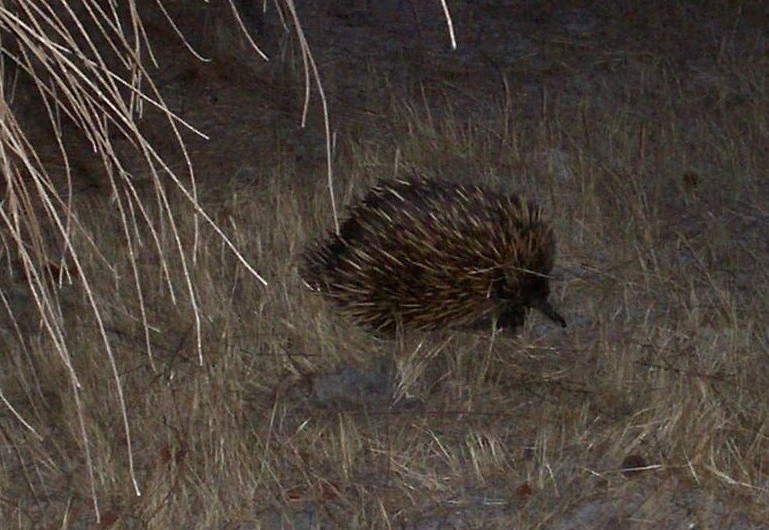WESTERN COVE WILDLIFE:
MAMMALS and REPTILES
Although he looks cuddly like a teddy and placid don't assume that a koala in the wild wants to be hugged and cuddled. Tame ones might be safe. Otherwise it's like randomly grabbing and hugging a person, a stranger, who doesn't know you — unpredictable. And notice the claws! Adult males are also heavily built, weighing about 12kg, and might be more than you can handle. You could end up in hospital!
Koalas are marsupials, not bears, and feed excusively on the leaves of certain eucalypts. Adults consume 500g daily. The leaves provide most of the moisture koalas need, but they also drink occasionally.
Their home range is about 15 trees. A small group of koalas lives at Western Cove near Capstan Street and can be quite noisy at nights.
Goannas (Varanas gouldii) occur all over Kangaroo Island. The pictured specimen, photographed at Western Cove, was 70 cm long but they can grow to over 150 cm.
The Black Tiger Snake (Notechis ater niger) is venomous; an untreated bite can kill an adult human.
The specimen shown was photgraphed 15 metres from a house at Western Cove and was over 150cm long which is the normal adult size.
In the 1970s drivers of tourist buses sometimes stopped to let the more macho tourists get off and kill tiger snakes which happend to be on the road but nowadays the species is protected.
The Australian (December 1, 2010) reported the death of a 43-year-old man in Western Australia bitten on the toe by a 30cm tiger snake.
The Geelong Advertiser (January 28, 2010) reported that a staffordshire terrier snapped the spine of a tiger snake about to slither into a playroom where three young children were eating dinner.
The Herald Sun (November 16, 2010) reported that 150 Victorians are admitted to hospitals with snakebite each year and quoted a toxicologist who advises people: "to wear sturdy shoes and gaiters, not thongs or bare feet, when walking through long grass or bush." That's good advice for Western Cove too.
Wallabies are plentiful at Western Cove especially on the east side where there is more vegetation. They come out of hiding toward evening when five or ten at a time can often be seen. They scamper away when a human comes to within about 20 metres.
Matthew Flinders (1774-1814) named Kangaroo Island after its kangaroos.
The two in the photo lived at Western Cove, were accustomed to human presence, and even entered people's houses.
Kangaroos have occasionaly been observed on the beach at low tide, apparently drinking sea water. Local inhabitants also claim to have seen snakes' tracks on the beach. The animals are really drinking fresh water, not salt water. At Western Cove the water table is often only about a metre below ground level and fresh water therefore seeps into the ocean. At some spots enough fresh water seeps out of the ground at low tide to be drinkable.
Echidna or Spiny Anteater (Tachyglossus aculeatus) is native to Kangaroo Island. They live solitary lives on home areas about 800 metres across. The pictured specimen lives at Western Cove.
